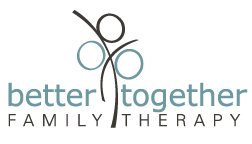The Mental Boost: How Exercise Elevates Your Mind
Practical tips for incorporating exercise into your daily routine from a Neurodivergence Friendly Therapist in Maryland
Exercise is my personal self-care routine, established at a very young age. I use exercise as a means of dealing with anxiety. Whether I’m doing my best Katie Ledecky impression in the pool or just going on a casual 20-30 minute hike with my dogs in a local park, exercise isn’t just a routine; it’s a part of who I am.
Exercise improves mental health and well-being, and helps to manage ADHD
Have you ever wondered why we experience a sense of relief after a 30-minute workout? This phenomenon, often referred to as “runner’s high,” can be attributed to exercise stimulating the release of endorphins, the chemicals in our brains that enhance mood.
Engaging in regular exercise not only contributes to physical well-being but also plays an important role in improving mental health. It reduces anxiety and depression while enhancing self-esteem and cognitive function.
Exercise reduces stress hormones
Finding time for exercise can be a stressful task for many of us, yet the irony lies in the fact that engaging in physical exercise can effectively reduce stressors related to everyday life. That’s because when we exercise, our body naturally reduces the level of stress hormones, such as cortisol.
Distracted by an upcoming presentation? Channel that stress into a calming session of your favorite yoga poses. Is the snow confining you indoors? Embrace it! Bundle up and enjoy some sledding fun. For those of us who might lack coordination, take a leisurely walk around the block and admire the blanket of snow that encapsulates our eager inner child.
Using exercise to manage ADHD
Exercise helps to manage ADHD symptoms, but not in the ways you might think. You may think that exercise will help your ADHD child to be more tired at the end of the day. Actually, exercise does something quite different for neurodivergent brains. Exercise maintains alertness and boosts mental organization.
This is especially true if the exercise requires you to be upside down (downward dog, anyone?) some of the time. Or relies heavily on your core muscles (planking, for example). Try these activities for 5 minutes before a big presentation or organizing task. You should experience a temporary boost in your executive function. When you start to zone out or feel disorganized, do it again!
Strategies to help you get more active
Setting out on a fitness journey can be a daunting task, but it’s important to start somewhere. Here are some motivating tips to help kickstart your journey.
Find the things you naturally like to do
Begin by exploring activities you genuinely enjoy. Whether it’s dancing, hiking, spending time out on the water, finding pleasure in your workouts makes the process more enjoyable and sustainable.
Team sports offer a social and enjoyable way to stay active while connecting with others who share similar interests. Many local gyms provide fitness classes, making it easier for people to find a fitness routine that suits their interests.
Personal progress over comparison
Understand that your fitness journey is unique to you. Focus on your personal progress rather than comparing yourself to others. Cultivating a positive mindset through affirmations can make this journey more manageable. Positive self-talk is a motivating force necessary to achieve our goals. Remember you’re doing this for yourself, not anyone else.
Create a routine. Especially if you have ADHD.
Establishing a routine is key to making physical activity a regular part of your daily life. Consistency is crucial for building habits that contribute to both physical and mental endurance. Instead of sporadic intense workouts, aim for a regular routine that suits your schedule. Engaging in 20-30 minutes of exercise a few days a week is more effective in the long run compared to occasional intense workouts done to compensate for missed sessions.
Reward yourself
Treat yourself to a well-deserved reward. Consider options like a refreshing smoothie, a soothing hot shower, meditation, or new workout gear. Choose rewards that align with your fitness journey (and your budget).
Acknowledge and welcome flexibility in your life. Treating yourself occasionally can contribute to a balanced lifestyle. Avoid extremes. Keep striving for a healthy diet and regular physical activity, but it’s also okay to indulge in a sweet treat or a Netflix marathon form time to time to unwind and enjoy life. Balance is key to overall well-being!
5 Activities to kickstart your fitness journey
Jog or walk a distance that suits your comfort level. Start small and gradually increase the distance over time.
Jumping rope offers a simple yet powerful full-body workout, easily achievable in the comfort of your home, at the park, or virtually anywhere that offers adequate space.
Swimming is an excellent workout for your body. This non-impact sport engages multiple muscle group while also placing limited exertion on your joints.
Hike your favorite trail - a fun family activity that welcomes furry friends. Some of my favorite hiking spots in the DMV include Rock Creek, Great Falls, Frederick Watershed, and Shenandoah.
Yoga is known for its benefits in improving flexibility and balance, and it can compliment other fitness exercises by providing strength and flexibility components.
If these seem daunting, you’re not alone. Many of us live our lives mostly “in our heads” and need help reconnecting with our bodies. You might start with a daily stretching routine to get comfortable in your body. Then add in dancing to a favorite song, chair yoga, or another physical activity that feels right for you. Find more information about getting out of your head and into your body here.


